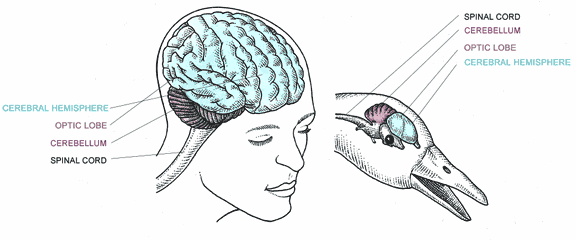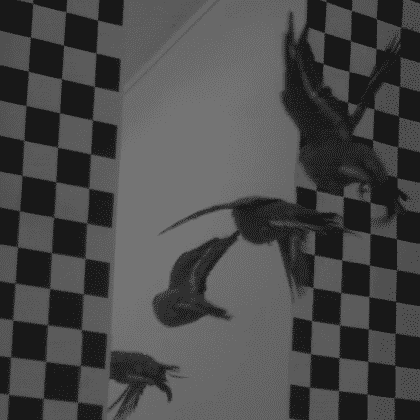Brain might be the most vital part of any animal. Although, birds are quite small compared to human beings, lately researchers have found that birds do have more precise brains than humans.
Birds’ brains are small compared to most mammals, and most birds are poor at learning new skills. However, a bird is born huge number of ‘programmes’ built onto its brain. These programmes control not only simple activities like preening and feeding, but also feats of instinct such as migration.
But researchers at the University of Queensland (UQ) wanted to know precisely how birds judge gaps between obstacles before engaging in evasive manoeuvres. So, they made a test with budgerigars (a small gregarious Australian parakeet bird. It is popular as a pet bird and has been bred in a variety of colors.) and found that budgies flew down corridors with variable widths between obstacles, and their flights were recorded with high-speed cameras for analysis. Please note that, budgies use optic flow (the rate visual cues pass by the eyes) to judge airspeed. They do not see three-dimensionally like humans, due to the lateral placement of their eyes and lack of binocular overlap.
After analysis, researchers were astonished, They said that those budgerigars were able to display superior judgement of their body width compared to humans and thus they can fly between gaps almost as narrow as their outstretched wingspan rather than taking evasive measures such as tucking in their wings.
Researcher Dr Ingo Schiffner at UQ Queensland Brain Institute said, “We were quite surprised by the birds’ accuracy – they can judge their wingspan within 106 per cent of their width when it comes to flying through gaps. When you think about the cluttered environments they fly through, such as forests, they need to develop this level of accuracy. When they encounter a narrow gap, they either lift their wings up vertically or tuck them in completely, minimising their width to that of their torso.”
Dr Schiffner also said that the research would be applied to robotics work at the Queensland Brain Institute’s Neuroscience of Vision and Aerial Robotics laboratory. He said, “If we can understand how birds avoid obstacles, we might be able to develop algorithms for aircraft to avoid obstacles as well.”
Researchers have published the paper, Minding the gap: In-flight body awareness in birds, in Frontiers in Zoology.
Source: University of Queensland
[ttjad keyword=”laptop-sony”]





